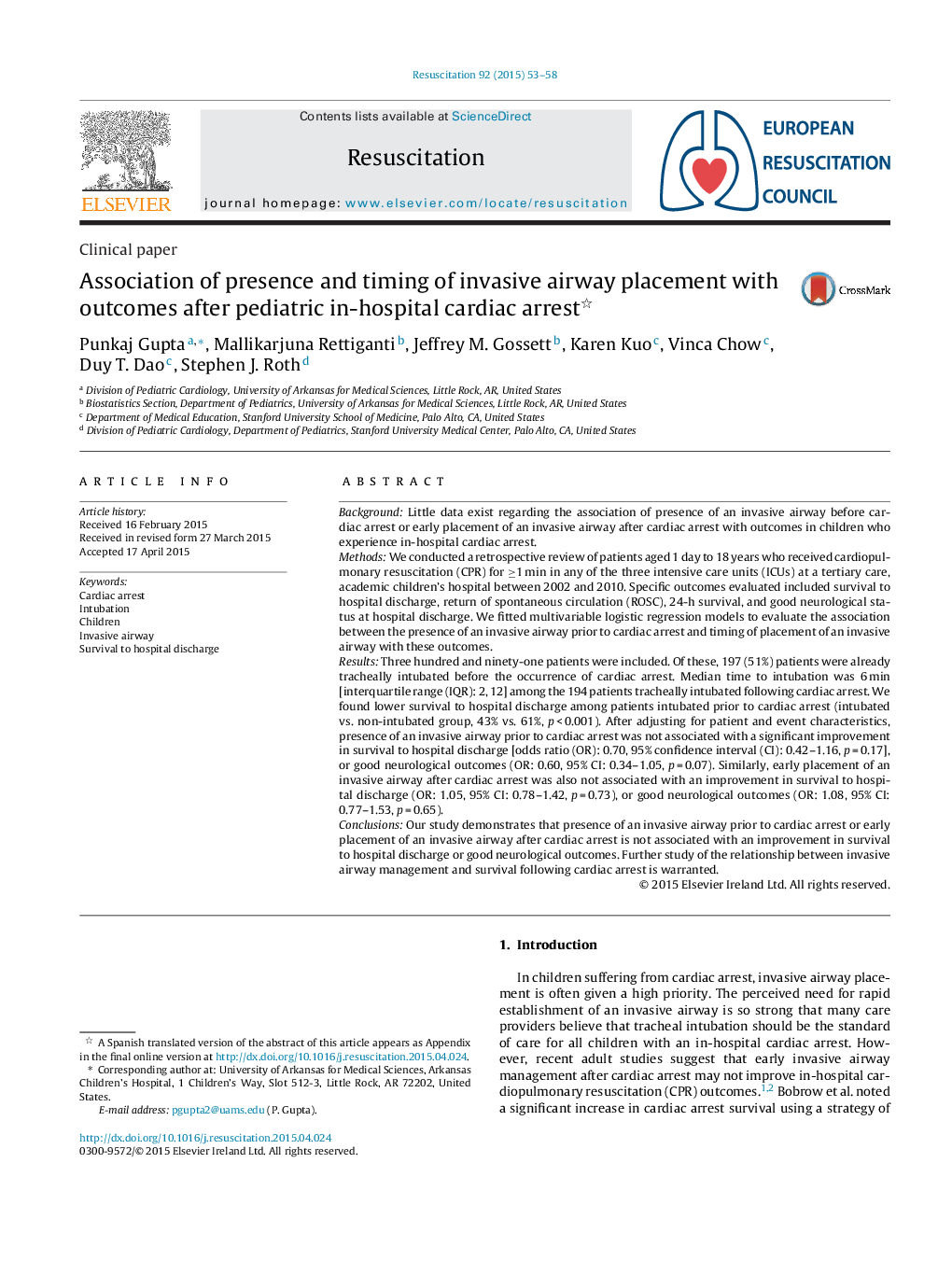| کد مقاله | کد نشریه | سال انتشار | مقاله انگلیسی | نسخه تمام متن |
|---|---|---|---|---|
| 5997803 | 1578992 | 2015 | 6 صفحه PDF | دانلود رایگان |

BackgroundLittle data exist regarding the association of presence of an invasive airway before cardiac arrest or early placement of an invasive airway after cardiac arrest with outcomes in children who experience in-hospital cardiac arrest.MethodsWe conducted a retrospective review of patients aged 1 day to 18 years who received cardiopulmonary resuscitation (CPR) for â¥1 min in any of the three intensive care units (ICUs) at a tertiary care, academic children's hospital between 2002 and 2010. Specific outcomes evaluated included survival to hospital discharge, return of spontaneous circulation (ROSC), 24-h survival, and good neurological status at hospital discharge. We fitted multivariable logistic regression models to evaluate the association between the presence of an invasive airway prior to cardiac arrest and timing of placement of an invasive airway with these outcomes.ResultsThree hundred and ninety-one patients were included. Of these, 197 (51%) patients were already tracheally intubated before the occurrence of cardiac arrest. Median time to intubation was 6 min [interquartile range (IQR): 2, 12] among the 194 patients tracheally intubated following cardiac arrest. We found lower survival to hospital discharge among patients intubated prior to cardiac arrest (intubated vs. non-intubated group, 43% vs. 61%, p < 0.001). After adjusting for patient and event characteristics, presence of an invasive airway prior to cardiac arrest was not associated with a significant improvement in survival to hospital discharge [odds ratio (OR): 0.70, 95% confidence interval (CI): 0.42-1.16, p = 0.17], or good neurological outcomes (OR: 0.60, 95% CI: 0.34-1.05, p = 0.07). Similarly, early placement of an invasive airway after cardiac arrest was also not associated with an improvement in survival to hospital discharge (OR: 1.05, 95% CI: 0.78-1.42, p = 0.73), or good neurological outcomes (OR: 1.08, 95% CI: 0.77-1.53, p = 0.65).ConclusionsOur study demonstrates that presence of an invasive airway prior to cardiac arrest or early placement of an invasive airway after cardiac arrest is not associated with an improvement in survival to hospital discharge or good neurological outcomes. Further study of the relationship between invasive airway management and survival following cardiac arrest is warranted.
Journal: Resuscitation - Volume 92, July 2015, Pages 53-58